NASA scientist Fred Espenak captured this wonderful timelapse video of Comet PANSTARRS as it set over the Dos Cabezas Mountains in Arizona. The photos were taken from San Simon, AZ using a Nikon D90 and Nikkor 18-200 VR zoom lens at 200mm. All exposures were 2 seconds at F/5.6 (ISO 800).
I’m now seriously jealous, as my location has been socked in with clouds all week so far. If you’re in the same boat, enjoy some more images of Comet PANSTARRS from Universe Today readers:
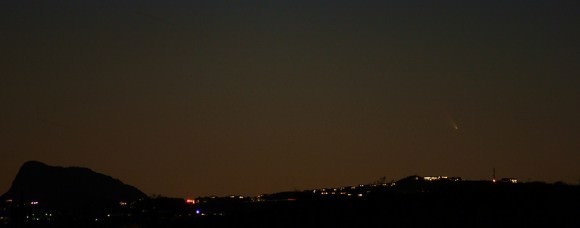
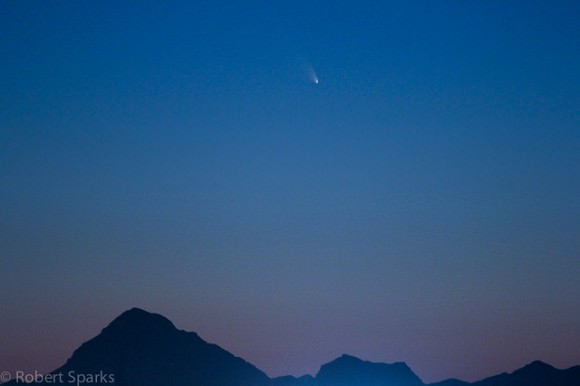
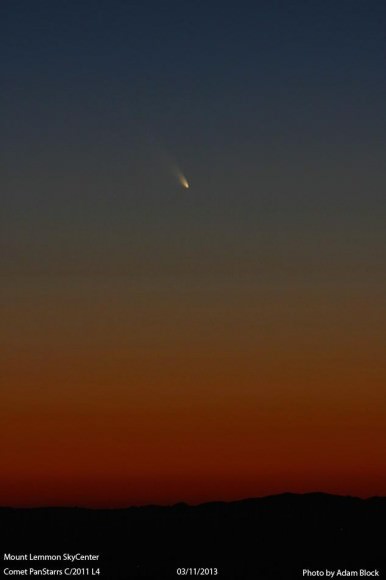
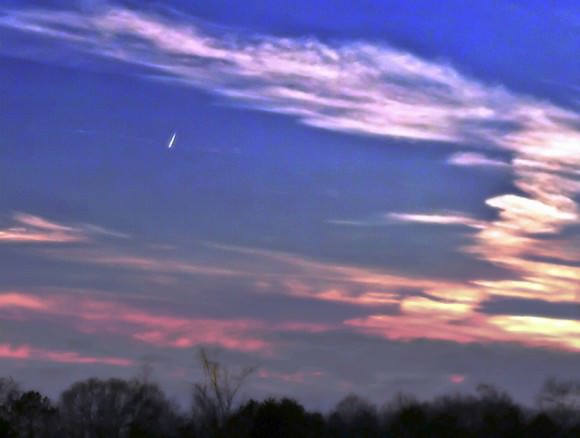
Comet PanSTARRS – The Movie from Fred Espenak on Vimeo.

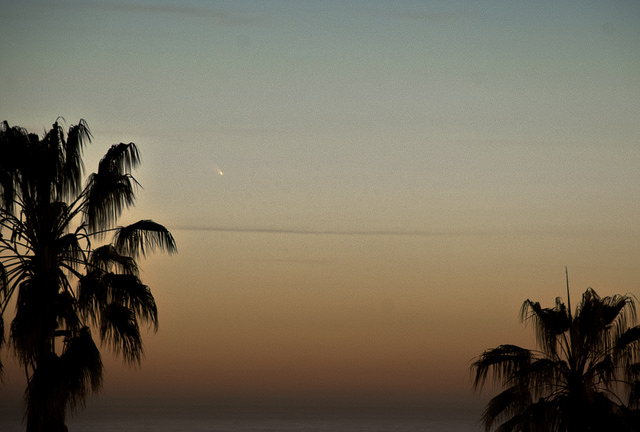
That was an excellent view of it seemingly rocketing away. Its been clouded all week around here too in southern Iberia. Europe.
The pictures are great. But the Alabama photo appears either reversed or or it is not the comet. The tail appears too dark as well leading me to believe It is more likely a plane trail. The tail should be pointing lower right to upper left.
Appears to be a screenshot of the timelapse movie, but certainly not the movie itself.
Dear Nancy! The comet is C/2011 L4. “PANSTARRS” – is a note, specifying on
Panoramic Survey Telescope and Rapid Response System, thanks to which the comet was found in 2011.
Nice!
Foggy here…. dang…. wuz hoping to see that comet tonight! Might I’ll drive on out to the coast anyway? A 12 mile round trip to see some fog? cost? Dzzz…
awesome!!!! 😀
Been cloudy at sunset the past week. However, finally saw the comet tonight next to the 1st Crescent Moon.
PanSTARRS was still in the glow of the fading sunset light when I first spotted it with my 10×35 binoculars at around 7:02p (sunset was 6:32), No one in the group could see it naked eye.
Surprised to see how small the comet appeared. Certainly not in the viewing league as Hale-Bopp or Hyakutake, however, still a very nice sighting. Now I can stop cursing the weather gods. 😉
Great! Despite beautiful weather I have been searching with my kids in vane for to days now from Sola (“the sun”!..) just outside Stavanger in Norway. But I finally found it – at midnight – on my photochip! Very faint, hardly visible, and not to bet on, but still a bright angled speckle at the right position compared with Stellarium and Cartes du Ciel software. I uploaded a couple of the shots with guiding lines on my fb page that shows just how elusive this comet has been here north. We expect better days ahead as the comet has now crossed the eccliptic and rises higher in the evening sky. One major challenge for our northern latitudes has been the smaller angle of the eccliptic which has kept C/2011 L4 significantly lower to the horizon compared to lower latitudes. As will be the case with comet C/2012 S1 Ison once it arrives this autumn as well. Cheers!
Nice !!!!!!!